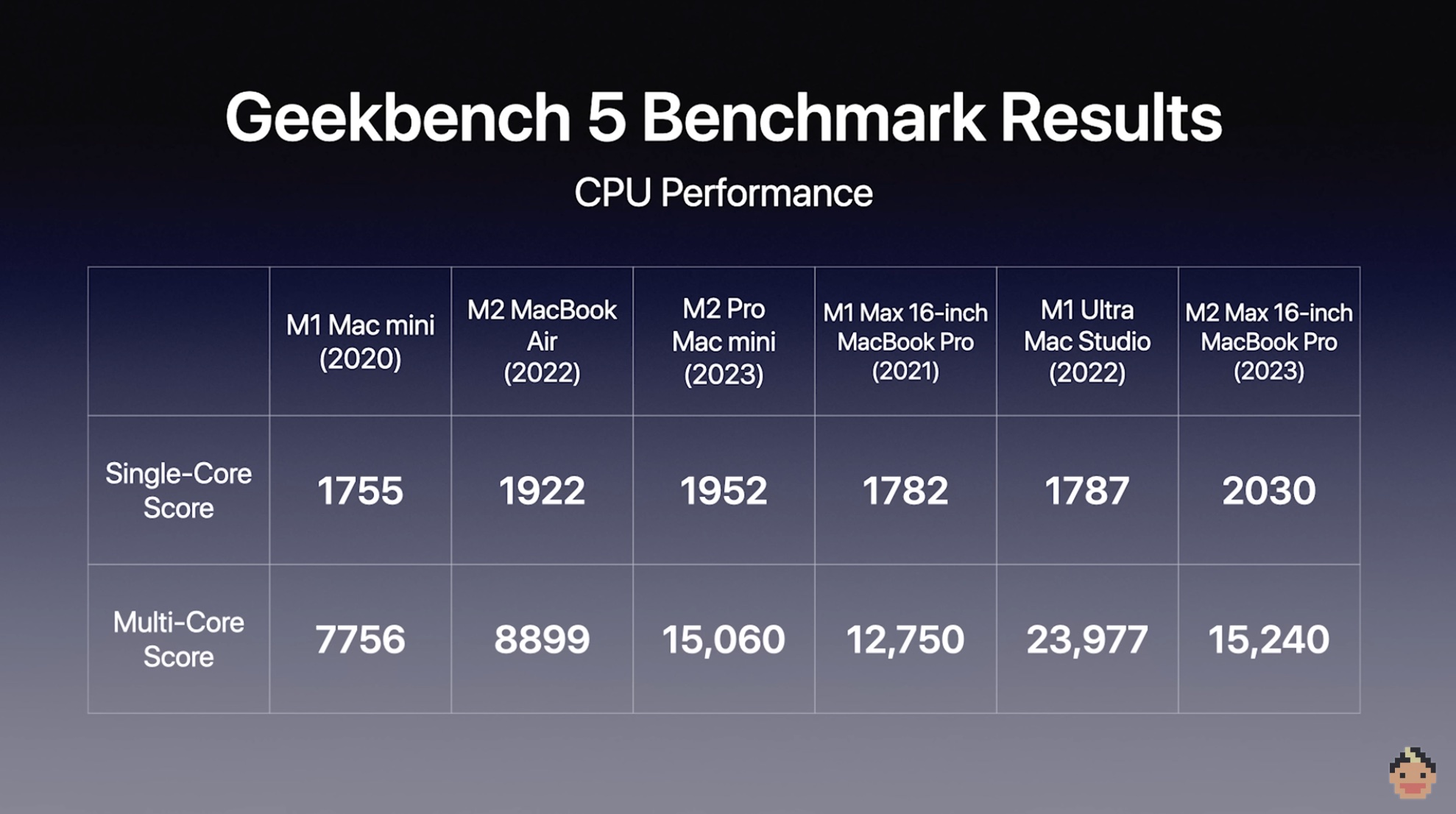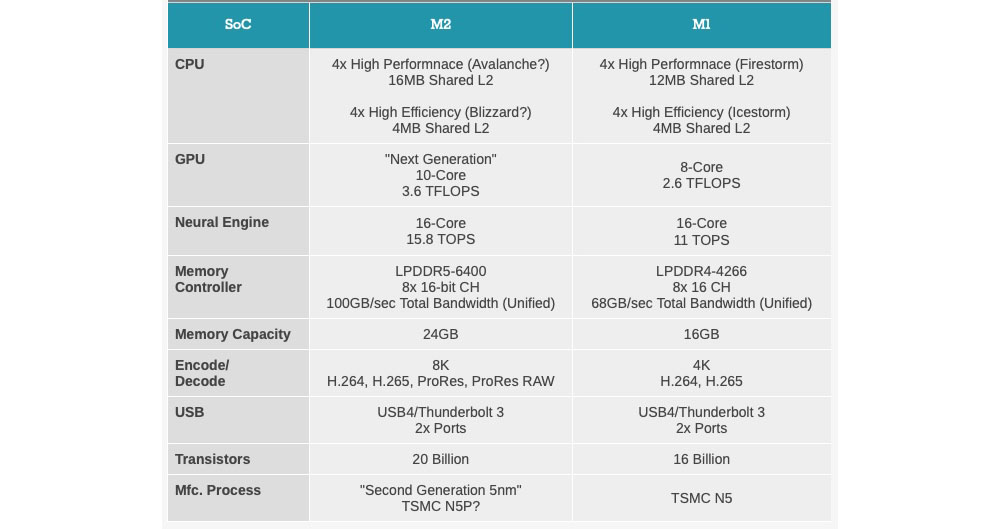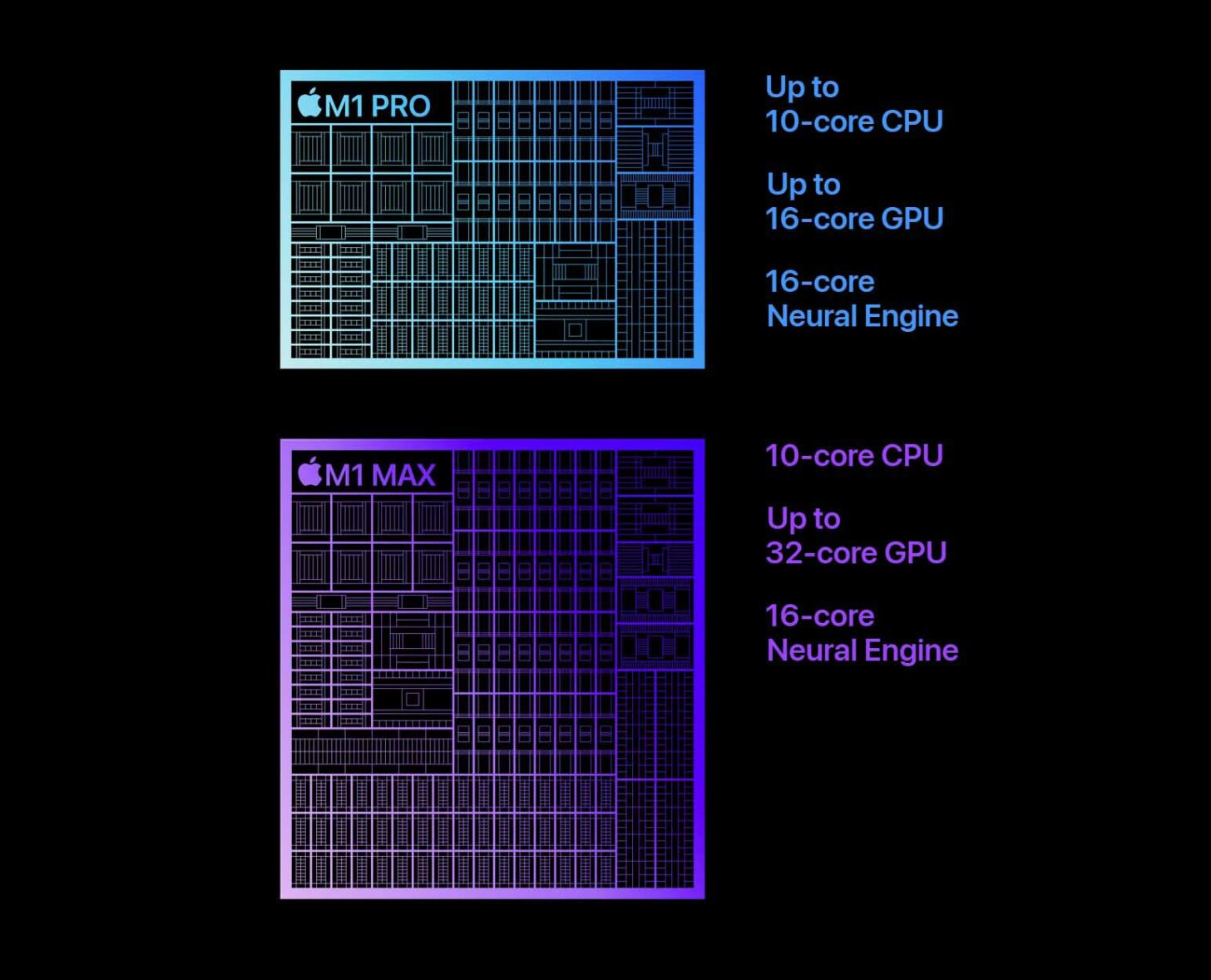M1 and M2 Chip: 5 Key Differences

The introduction of Apple's M1 and M2 chips revolutionized the computing landscape, offering unparalleled performance and efficiency. These chips, designed specifically for Apple's ecosystem, have garnered significant attention and acclaim. In this comprehensive analysis, we delve into the five key differences between the M1 and M2 chips, exploring their features, capabilities, and implications for users.
1. Architecture and Performance

At the heart of the M1 and M2 chips lies a distinctive architecture that sets them apart. The M1 chip, unveiled in late 2020, boasts a groundbreaking unified design, integrating the CPU, GPU, neural engine, and other components onto a single system on a chip (SoC). This architecture, known as the Apple Silicon M1, delivers exceptional performance and energy efficiency, marking a significant departure from traditional Intel-based architectures.
In contrast, the M2 chip, introduced in 2022, builds upon the success of its predecessor. It maintains the unified architecture but introduces enhancements in processing power and efficiency. The M2 chip offers an improved CPU with a higher clock speed and more cores, resulting in enhanced multitasking capabilities and faster performance. Additionally, the GPU in the M2 chip features a higher core count, delivering superior graphics performance for demanding tasks like gaming and video editing.
Performance Comparison
| Metric | M1 Chip | M2 Chip |
|---|---|---|
| CPU Cores | 8 Cores (4 Performance, 4 Efficiency) | 8-10 Cores (4-6 Performance, 4-4 Efficiency) |
| GPU Cores | 7-8 Cores | 8-10 Cores |
| Clock Speed | Up to 3.2 GHz | Up to 3.49 GHz |
| Memory Bandwidth | Up to 112 GB/s | Up to 192 GB/s |

2. Memory and Storage
The M1 and M2 chips exhibit differences in memory and storage configurations, catering to varying user needs.
The M1 chip supports unified memory architecture, allowing seamless sharing of memory between the CPU and GPU. This design simplifies memory management and enhances performance. The M1 chip typically offers 8GB or 16GB of unified memory, providing ample capacity for most users.
The M2 chip, on the other hand, introduces a more flexible memory configuration. It supports both unified memory and discrete memory designs, catering to different device form factors and user requirements. The M2 chip can offer up to 24GB of unified memory or utilize discrete memory modules for even higher memory capacities.
Memory and Storage Comparison
| Metric | M1 Chip | M2 Chip |
|---|---|---|
| Memory Type | Unified Memory | Unified or Discrete Memory |
| Memory Capacity | 8GB or 16GB | Up to 24GB (Unified) or Higher (Discrete) |
| Storage Options | SSD (Up to 8TB) | SSD (Up to 8TB or Higher) |
3. Graphics Performance
Graphics performance is a crucial aspect of the M1 and M2 chips, especially for users engaging in graphics-intensive tasks.
The M1 chip features a powerful integrated graphics processor (iGPU) with up to 8 cores. This iGPU delivers impressive graphics performance for everyday tasks and even light gaming. The M1 chip's graphics architecture is optimized for efficiency, making it ideal for battery-powered devices like MacBook Air and iPad Pro.
The M2 chip takes graphics performance to the next level. It introduces a more advanced iGPU with up to 10 cores, offering significantly higher graphics processing power. The M2 chip's iGPU is capable of handling demanding graphics tasks, including complex 3D rendering and high-quality video encoding. This makes the M2 chip a compelling choice for content creators and professionals in graphics-intensive fields.
Graphics Performance Comparison
| Metric | M1 Chip | M2 Chip |
|---|---|---|
| iGPU Cores | 7-8 Cores | 8-10 Cores |
| Graphics Performance | Good for Everyday Tasks, Light Gaming | Exceptional for Demanding Graphics Workloads |
4. Power Efficiency and Battery Life
Power efficiency is a hallmark of Apple’s M-series chips, and the M1 and M2 chips continue this tradition.
The M1 chip, with its unified architecture and optimized design, achieves impressive power efficiency. It offers a significant boost in performance while consuming less power compared to traditional Intel-based chips. This efficiency translates to longer battery life, making devices like the MacBook Air and iPad Pro highly efficient and portable.
The M2 chip, despite its enhanced performance, maintains a high level of power efficiency. It introduces improvements in power management, allowing for more efficient power consumption during peak workloads. While the M2 chip offers higher performance, it does so without sacrificing the exceptional battery life that Apple's M-series chips are known for.
Power Efficiency and Battery Life Comparison
| Metric | M1 Chip | M2 Chip |
|---|---|---|
| Power Efficiency | Exceptional | Highly Efficient |
| Battery Life | Up to 18 Hours (MacBook Air) | Up to 20 Hours (Estimated) |
5. Compatibility and Ecosystem

The M1 and M2 chips are integral to Apple’s ecosystem, offering seamless integration and compatibility.
The M1 chip was introduced with a specific focus on compatibility. It was designed to seamlessly run macOS and iOS apps, ensuring a smooth transition for users. The M1 chip's architecture and software optimizations allowed for efficient app performance and compatibility, making it an attractive choice for users transitioning from Intel-based Macs.
The M2 chip continues this compatibility trend, building upon the M1's success. It offers even better performance and efficiency, making it an ideal choice for users seeking the latest and greatest in Apple's ecosystem. The M2 chip's enhanced capabilities make it well-suited for demanding apps and future software releases, ensuring users can take full advantage of Apple's evolving ecosystem.
Compatibility and Ecosystem Comparison
| Metric | M1 Chip | M2 Chip |
|---|---|---|
| Compatibility | Seamless macOS and iOS App Support | Enhanced Performance and Efficiency |
| Ecosystem Integration | Excellent | Exceptional |
Conclusion
The M1 and M2 chips represent Apple’s continued innovation in the field of chip design. These chips offer significant differences in architecture, performance, memory, graphics, power efficiency, and compatibility. The M2 chip, in particular, builds upon the success of the M1, offering enhanced capabilities and a more powerful computing experience.
As Apple's M-series chips continue to evolve, users can expect even more impressive performance, efficiency, and compatibility. The future of Apple's ecosystem looks bright, with these chips powering a new generation of devices and delivering exceptional user experiences.
What are the key advantages of the M2 chip over the M1 chip?
+
The M2 chip offers several key advantages over the M1. It provides improved performance with a higher clock speed and more CPU cores, resulting in faster multitasking and better handling of demanding tasks. Additionally, the M2 chip features a more advanced iGPU with higher core counts, delivering exceptional graphics performance for content creators and professionals. The M2 also offers flexible memory configurations, allowing for higher memory capacities and better support for demanding applications.
Are there any compatibility issues when transitioning from an M1 to an M2 device?
+
No, there are no significant compatibility issues when transitioning from an M1 to an M2 device. Apple has ensured seamless compatibility between its M-series chips, allowing users to effortlessly move between devices without any major software or app compatibility concerns. The M2 chip builds upon the success of the M1, offering improved performance and efficiency while maintaining compatibility with the existing ecosystem.
Which devices currently utilize the M2 chip?
+
As of my knowledge cutoff in September 2023, the M2 chip is featured in several Apple devices, including the MacBook Air (M2, 2022), MacBook Pro (M2, 2022), and iPad Pro (M2, 2023). These devices showcase the M2 chip’s capabilities and offer users a powerful and efficient computing experience.



